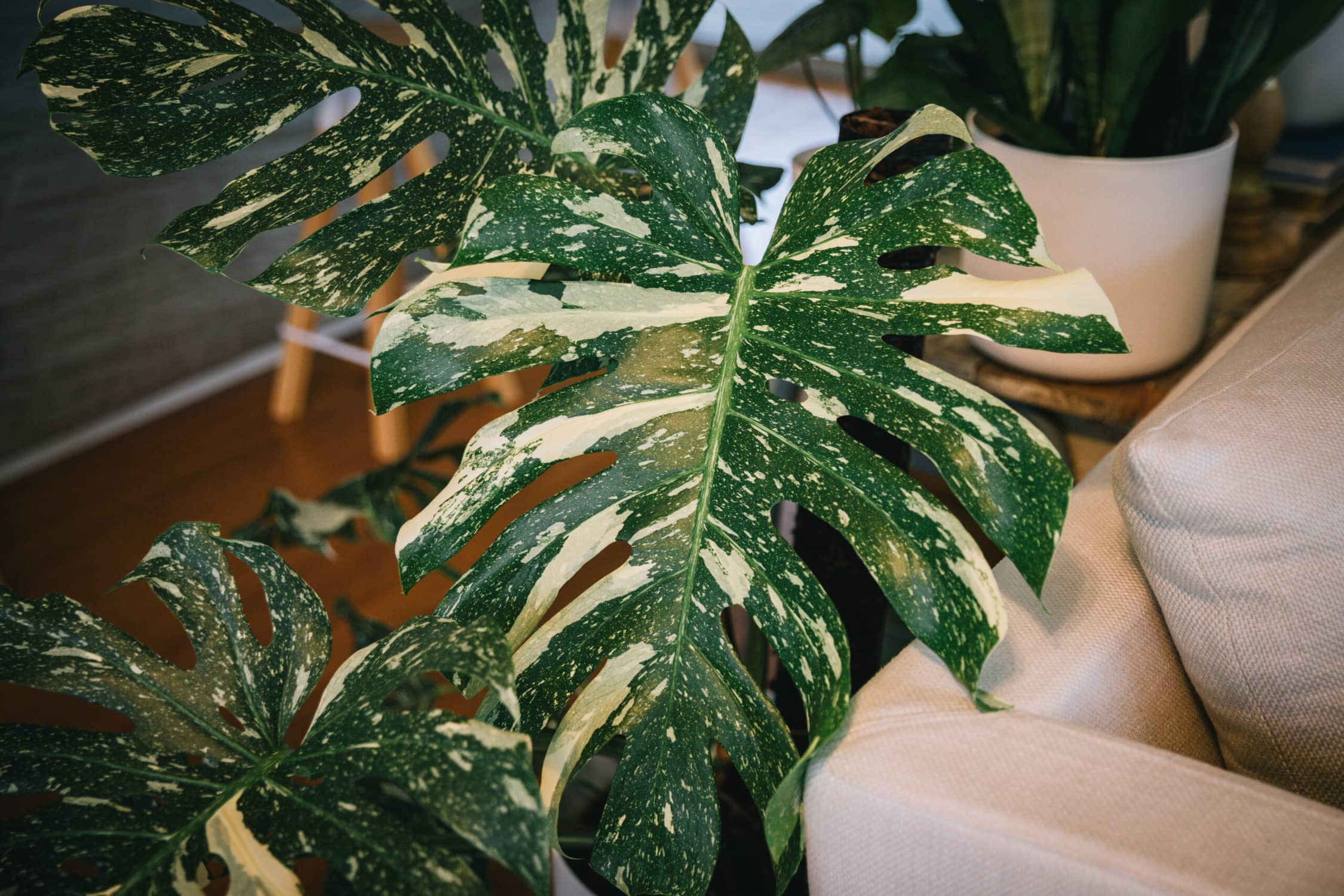8 monsteras to grow

If you love Monstera deliciosa, it might be time to discover some of its many relatives, cultivars and varieties.
WORDS & PHOTO Liz Carlson
When it comes to indoor plants, there is nothing more beloved than the monstera. Iconic since the 70s, the Swiss cheese plant has never gone out of style, adorning living room corners worldwide. Super low maintenance with showstopping foliage, it’s no wonder the Monstera deliciosa has long reigned supreme as the must-have houseplant. But if you’re looking for something a little more unique, did you know there are actually 50 species of Monstera out there, as well as many cultivars and varieties? Here in New Zealand there are about a dozen different monstera we can choose from, making them a great plant to begin collecting. There is a monstera for every type of plant parent and home.
Most monsteras have the same care requirements, so you can easily group them together at home without having to be too fussy with their care regimen. In the wild, monstera grow in the understory of the jungle so they like bright, indirect light, dappled as if they’re climbing up towards the canopy beneath larger trees. All monstera are actually vines, so they are inclined to climb upwards, even the big ones, producing aerial roots, little brown roots that appear along the stems as they try to latch onto something to support themselves. You can encourage this by planting a stake or pole in the pot to support them as they grow. Once supported, you’ll be rewarded with larger and more mature leaves, though some you can leave to trail downwards too. They also all like to be watered once the top few centimetres of soil has dried out, though they are tough and can take some neglect. Just remember, all monsteras are toxic to pets and hungry humans.
If you’re ready to venture beyond a traditional monstera or you’re looking for a smaller plant to adorn your space, look no further than the Monstera adansonii, also known as the Swiss cheese vine. These guys are widely available and equally easy to care for. With leaves that have large holes and fenestrations that trail, they’re perfect for a shelf or on top of a cabinet. The current theory for the holes in the leaves is that they allow for wind and sunlight to pass through towards the lower leaves. In the wild, the Swiss cheese vine will always latch on and grow up trees.
A similar relation of the Swiss cheese vine is the Monstera ‘Monkey Mask’. These grow with denser, fatter and chunkier leaves that have smaller holes. They tend to be sturdier and are equally tough. While they are marketed in New Zealand as a form of Monstera obliqua, this is highly unlikely because they are just so rare. It’s far more likely that they’re a variety of Monstera adansonii that have been cultivated in nurseries to produce a thicker plant.
VARIEGATED MONSTERAS
When you hear those viral news stories of houseplants that sell for absurd amounts of money online, more often than not they’re talking about variegated monsteras. Variegation when it comes to houseplants generally refers to a diversity of colours, and a lack of green pigment or chlorophyll in some of a plant’s cells, leaving part of the plant white. Usually it’s because of some kind of genetic anomaly. Here in New Zealand when we think of variegated houseplants, it’s generally a normally green houseplant that has white or cream colours on its leaves; but in actuality, most plants that have silver or colours in their leaves represent some kind of variegation that has been intentionally cultivated.
The king of all variegated monsteras is the Monstera ‘Albo’, which has true genetic chimeral variegation that can’t be replicated through seed or tissue culture. It’s just a luck of the draw. Because of this, they often fetch extremely high prices; before the houseplant trend began booming again during Covid-19, many went missing from local botanic gardens. With its remarkable white and green patterns, or even half-green half-white leaves, it’s no wonder they are so popular.
Another colour variation of the variegation can be yellow and lime-green patterns, and these variegated monsteras are known as Monstera ‘Aurea’. The care regimen for all variegated monsteras are the same, though the consequences are much higher if mistakes are made.
If you’re wanting a variegated monstera at a more affordable price, look for Monstera deliciosa ‘Thai Constellation’, with galaxy-like variegated patterns of white and green across its foliage. Developed out of a lab in Thailand, these are grown from tissue culture with stable variegation and are more widely available.
There are many other types of monsteras you can begin collecting, though most aren’t commercially sold or grown here yet. You have to look at acquiring them from collectors online. Monstera standleyana or the cobra monstera has stunning dark green and speckled white leaves and makes for a stunning trailing plant – though be warned, they are notoriously fussy houseplants. Another rare specimen is the Monstera dubia or shingle plant, with gorgeous small light and dark green speckled leaves that lay flat against whatever they grow on, such as a flat piece of fern fibre, known as shingling. Another showstopping unusual monstera is Monstera siltepecana, with its remarkable silvery leaves and dark veining. As they mature, they develop holes and fenestrations on larger leaves.
